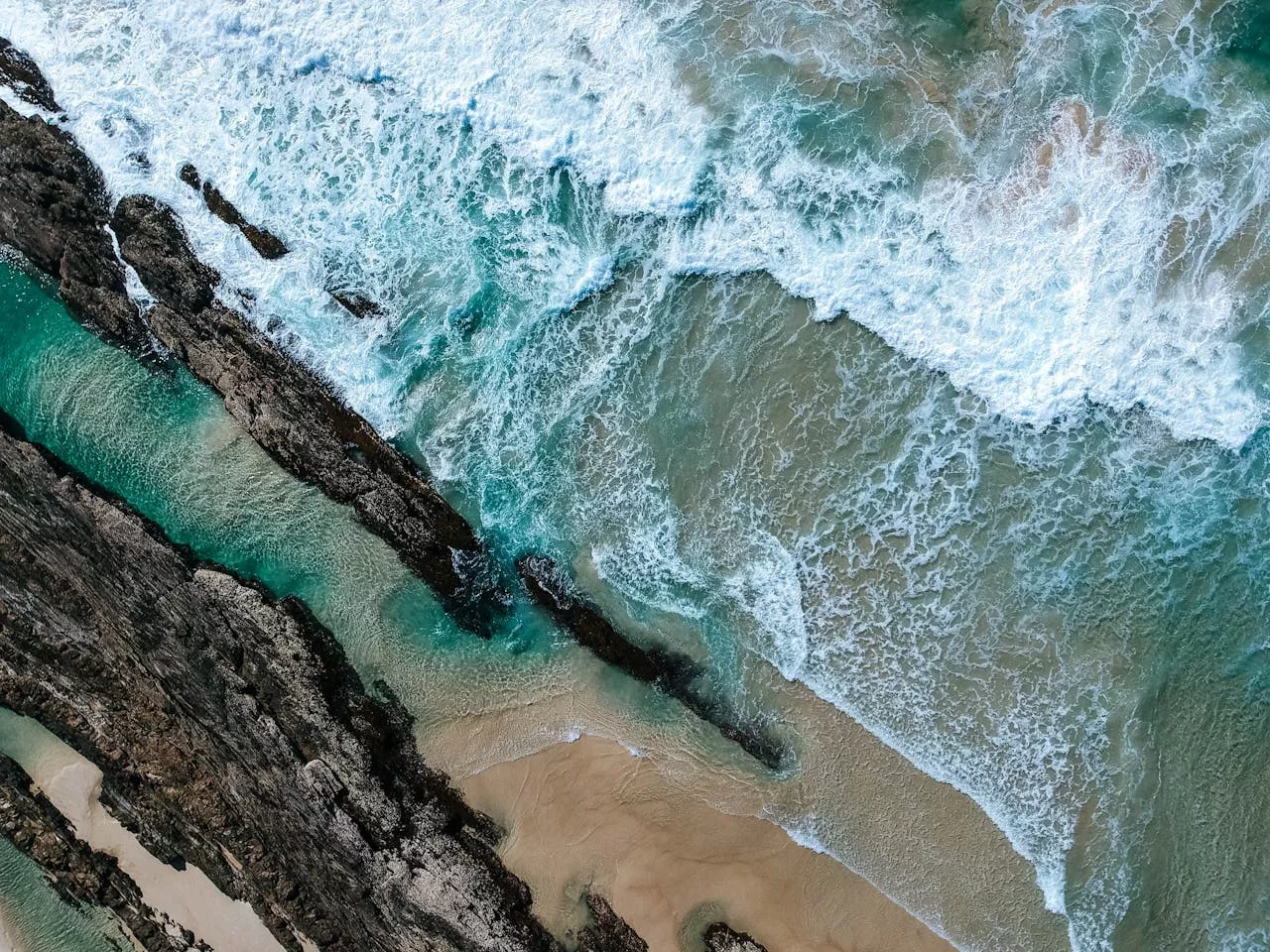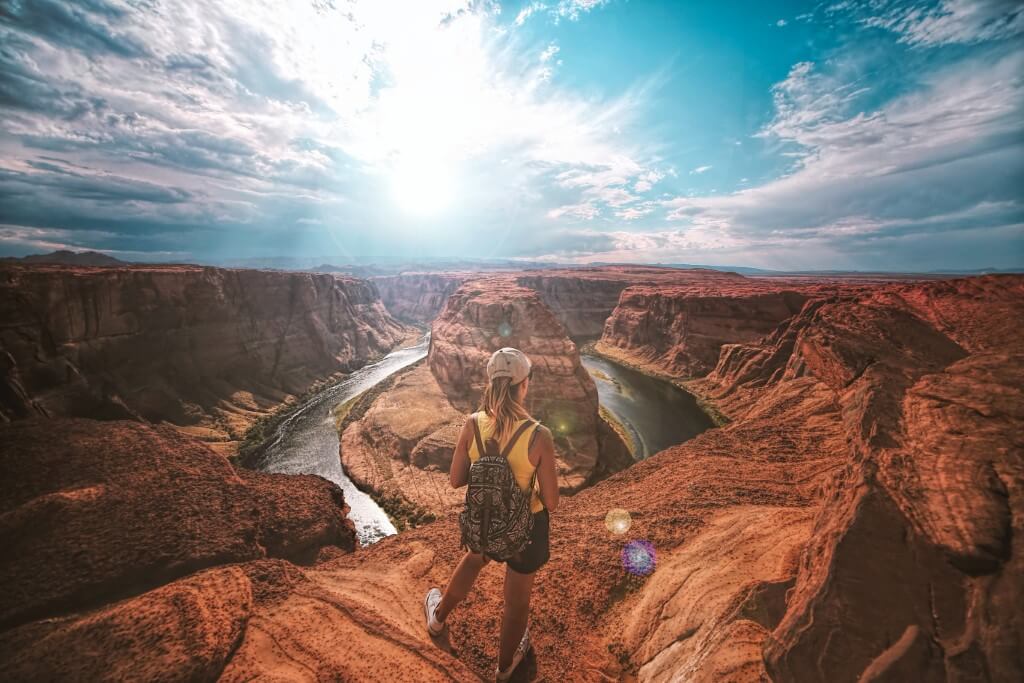Aerial photography is a fascinating and specialised branch of photography that involves taking pictures from elevated heights, usually with the help of aircraft or drones. This method offers a unique perspective, enabling photographers to snap breathtaking shots of landscapes, cities, and other subjects from high above. In recent years, aerial photography has surged in popularity, thanks to technological advancements like high-quality cameras and more affordable drones, making it accessible to both professionals and hobbyists.
What makes aerial photography so exciting is its ability to capture images that are otherwise impossible or challenging to get from the ground. This includes expansive views of landscapes, sweeping cityscapes, and stunning natural wonders. It’s also invaluable for documenting events, showcasing real estate properties, and monitoring construction projects. By providing a fresh perspective, aerial photography allows us to see familiar sights in a whole new light and uncover hidden details not visible from the ground.
Aerial photography is widely used across various industries, including real estate, tourism, environmental studies, mapping, and news reporting, to deliver captivating and valuable imagery. It opens up creative possibilities, offering dynamic visuals that engage both photographers and viewers alike. With aerial photography, the world is literally seen from a different angle, offering a unique and immersive experience for everyone involved.
Becoming an Aerial Photographer in South Africa
Becoming an aerial photographer in South Africa is more than just having a passion for photography. It requires a keen eye for detail, technical prowess, and a deep understanding of the unique challenges involved in capturing breathtaking aerial images. A top-tier aerial photographer must master the use of cameras, lenses, drones, and other specialised equipment. They must also grasp the intricacies of exposure, composition, and lighting, and be ready to adapt to sudden weather changes and unexpected obstacles during shoots.
Experience and Regulations
Experience is paramount in this field. Aerial photographers must be well-versed in South Africa’s airspace laws and drone operation regulations, particularly when flying drones for commercial purposes. This typically involves obtaining the necessary permits and licences. Many photographers start with aerial photography as a hobby, gradually building a professional portfolio that showcases stunning landscapes, structures, and various settings.
Skills and Adaptability
Adaptability and problem-solving are crucial. Aerial photographers must meticulously plan each shot while being ready to adjust on the fly to capture the perfect image. This requires keen spatial awareness, the ability to predict drone or aircraft movements, and quick adjustments to camera settings to seize fleeting moments. Attention to detail is essential for ensuring image sharpness and clarity, despite the challenges of aerial shooting.
Creative Vision
In addition to technical skills, a successful aerial photographer in South Africa needs a creative vision. They should be able to think outside the box to produce unique and captivating imagery. A thorough understanding of various photography genres, such as landscape, architectural, wildlife, and conceptual photography, enables them to deliver exceptional results across diverse contexts.
Collaboration
Professional aerial photographers often work in teams, coordinating with pilots, ground crews, and clients. Excellent communication and collaboration skills are vital to interpret the client’s vision and ensure that all parties are aligned to achieve the desired outcome.
Mastering the Craft
To stand out as an aerial photographer in South Africa, one needs a blend of technical expertise, extensive experience, creativity, adaptability, problem-solving skills, and effective communication. Mastering these aspects allows aerial photographers to capture stunning visuals that highlight the beauty of South Africa from above, leaving a lasting impact on viewers.
Keeping In Mind
Creating exceptional aerial photos isn’t just about having the right equipment; it’s about understanding the basics of composition. Focus on elements like leading lines, the rule of thirds, symmetry, and balance. These principles help you craft visually compelling and aesthetically pleasing images.
Don’t be afraid to experiment with various angles and perspectives to add depth and interest to your shots. Instead of always shooting straight down, try capturing your subject from an oblique angle or an unusual vantage point. This fresh perspective can make your images truly stand out.
Before your shoot, invest some time in planning and scouting the locations you’ll be photographing. Look for interesting points of interest, landmarks, or natural formations that could add visual appeal to your shots. Also, make sure you’re familiar with any potential restrictions or regulations for aerial photography in the area to ensure everything goes smoothly and legally.
Lighting is crucial in any form of photography, and aerial photography is no exception. Pay attention to the quality, direction, and intensity of light at different times of the day. The golden hour, right after sunrise or just before sunset, often provides stunning warm light that can elevate your images. However, don’t discount other times of the day, as dramatic shadows and contrasts can also create striking compositions.
After you’ve captured your aerial photographs, post-processing and editing can take them to the next level. Use professional photo editing software to enhance colours, correct exposure, and fine-tune the overall composition. Aim for a natural and realistic look rather than overediting; maintaining authenticity is key in aerial photography.
Remember, creating exceptional aerial photos requires practice, passion, and an eye for unique perspectives. By mastering the fundamentals, exploring different angles, planning meticulously, considering lighting conditions, and utilising post-processing, you can create breathtaking aerial photos that will impress your clients and customers.
Professional Aerial Photography Services
It is crucial to do thorough research on the available aerial photography services in your area. Utilise online platforms, such as search engines or photography directories, to gather a list of potential photographers. Look for photographers who specialise in aerial photography and have a strong portfolio showcasing their previous work. This will give you an idea of their skills and capabilities.
Next, consider the specific needs and requirements of your project. Are you looking for high-resolution images, video footage, or specialised techniques such as 360-degree panoramas? Understanding your project’s scope and objectives will help you narrow down your search and find a photographer who can meet your specific needs.
One of the most important factors to consider is the photographer’s experience and expertise in aerial photography. Aerial photography requires a unique set of skills and knowledge due to the challenges of shooting from above. Consider factors such as how long they have been in the industry, what type of equipment they use, and if they have relevant certifications or licences. This will help you ascertain their level of professionalism and ensure that they can handle your project effectively.
Furthermore, it is crucial to assess the safety measures and precautions implemented by the aerial photography photographer. Since aerial photography often involves flying drones or aircraft, safety should be a top priority. Ensure that the photographer follows all local regulations and guidelines regarding airspace and drone usage. Additionally, check if they have insurance coverage to protect against any potential accidents or damages.
Another important aspect to consider is the overall cost and pricing structure of the aerial photography services. While it is essential to find a photographer who fits within your budget, it is equally important to understand that quality aerial photography may come at a higher price. Consider the photographer’s reputation, experience, and the level of equipment they use when determining the value for money.
Communication and collaboration are crucial when hiring an aerial photography photographer. Schedule a consultation or meeting with potential candidates to discuss your project requirements, deadlines, and any specific details you would like them to capture. This will help you gauge their level of professionalism, responsiveness, and whether they understand and align with your vision.
Full Scale Aerial Photography Productions
To achieve the perfect aerial photography shot, a production team is often required. The photographer plays a crucial role in not only operating the camera but also in planning and executing the shoot. They must have a keen eye for composition and framing, as well as a deep understanding of the technical aspects of photography. Additionally, a team of lighting specialists may be needed to ensure that the subject is well-lit, especially when shooting during specific times of the day to capture the desired lighting conditions.
Locations also play a vital role in aerial photography. The team must carefully choose the best places to capture the subject from above, taking into consideration factors such as accessibility, safety, and legal requirements. This may involve scouting locations, obtaining necessary permits, and coordinating with local authorities. With the right location, the team can create visually striking images that showcase the subject in an entirely new way.
Special gear is another essential component of aerial photography. In addition to the camera and lenses, photographers may use drones or aircraft to capture images from above. Drones have become increasingly popular due to their accessibility and manoeuvrability, allowing photographers to reach angles and heights that would be otherwise impossible. However, using drones also requires expertise in piloting and complying with safety regulations. Other specialised gear, such as stabilisers or gimbals, may be used to ensure smooth and stable footage or images, particularly when shooting in challenging conditions.




